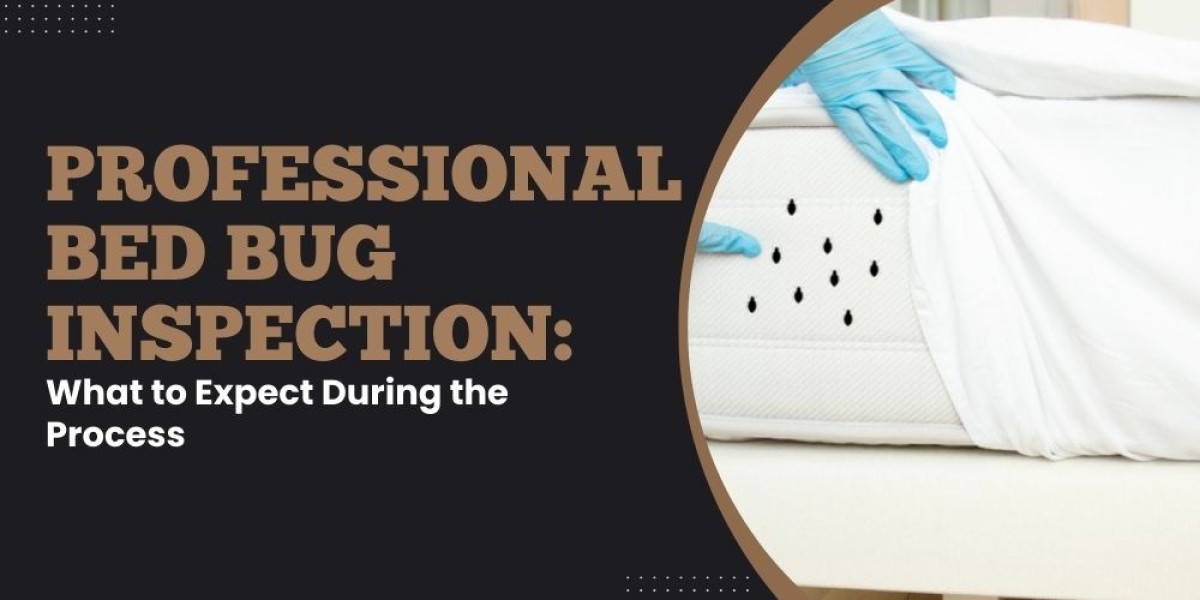Waking up to discover that you've been a snack for bed bugs is nobody's idea of a good time. Before these uninvited guests get too comfortable, it is better to exterminate them—the sooner, the better. This is where professional bed bug inspections become vital, acting as the first line of defense in the Bugs battle. Let's explore why catching these critters early and relying on professionals can make all the difference in your home-sweet (and bug-free) home.
Understanding Bed Bugs
First, let's talk about the enemy. Bed bugs are like the ninjas of the pest world: small, sneaky, and masters of hiding. They're reddish-brown, approximately the size of an apple seed, and have a nocturnal habit of feeding on human blood. Furthermore, their bites can cause allergic reactions and sleepless nights apart from the icky factor.
On that note, early detection of the indications is essential. Look for tiny blood spots on your sheets, itchy bite marks arranged in a line or cluster, or even the sight of the bugs themselves or their shed exoskeletons. It's like playing detective but way less fun.
The Professional Inspection Process
a. Initial Consultation
During the initial contact with a pest control service, you can expect to discuss your pest concerns and schedule an inspection. They will provide information on their services and what to expect next.
Preparing for the inspection involves several steps, including the following:
- Clear Access: Ensure access to areas where pests have been seen or suspected.
- Clean: Tidy up the space to allow for a thorough examination.
- Secure Pets: Keep pets away from the inspection areas for safety.
- Documentation: Record the times and locations of observed pests.
- Questions: Prepare any questions you have for the pest control professional.
b. On-Site Inspection
Here's where the magic happens. Professionals conduct thorough on-site inspections to detect bedbugs in your home using specialized tools and maybe even trained dogs (K9 bed bug detection). Also, the process targets key areas and can take several hours, depending on your home's size and the pest's concealment skills.
To give you a clearer picture of what professional bed bug inspection involves, here are some key components:
- Experts employ a variety of instruments and methods for detection.
- Specially trained dogs assist by using their keen sense of smell.
- Key inspection areas include beds, furniture, and behind wallpapers.
- The duration of the inspection varies, influenced by the home's size and the bugs' hiding abilities.
c. Identification
Not all uninvited guests are bed bugs. When identifying potential bed bug infestations, professionals ensure they are not mistaking them for similar pests. This process involves assessing the severity of the infestation within a home.
Before diving into the specifics, here's a quick overview of key steps in the process:
- Not every uninvited pest is a bed bug.
- Experts distinguish bed bugs from other lookalike pests.
- Classifiers categorize the infestation level as mild, moderate, or severe.
d. Reporting
On the other hand, reporting provides a comprehensive strategy and detailed findings to eliminate bed bugs from your home. This serves as an essential guide towards a pest-free environment. It outlines a multifaceted approach, combining various treatment methods for effective extermination.
- Detailed findings on bed bug infestation
- A strategic battle plan for eradication
- Use of chemical treatments
- Implementation of heat treatments
Steps During Post-Inspection
Moreover, experts often recommend combining chemical and heat treatments and preventive measures to address bed bug infestations. Experts tailor these strategies to eliminate bed bugs and prevent future occurrences effectively.
Preparing for treatment involves the following:
- Thoroughly wash and dry all bedding, curtains, and clothing in the highest heat setting.
- Vacuuming floors, furniture, and bed frames to remove bed bugs and their eggs.
- Sealing wall and floor cracks and crevices can prevent bed bug entrances.
- Decluttering the space to reduce hiding spots for bed bugs.
Follow-up inspections play a crucial role in bed bug management. They ensure the success of the treatment and eradicate all bed bugs to safeguard against potential re-infestation.
Preventing Future Infestations
Lastly, staying vigilant is vital. Regular checks, vacuuming, and reducing clutter can keep your home from becoming a bed bug hotspot again. These measures include regular inspections and cleanliness to ensure your home remains free from bed bugs. Consider implementing the following preventive measures:
- Remain vigilant by regularly checking for signs of bed bugs.
- Regular vacuuming helps eliminate any early signs of infestation.
- Reducing clutter in your home minimizes bed bug hiding spots.
- Treat these preventive measures as routine maintenance tasks, like lawn mowing or gutter cleaning.
Pest Quest: Uncovering Unwanted Guests
Professional bed bug inspections in Baltimore, MD, are your best bet in keeping your nights peaceful and your skin bite-free. So, don't hesitate to call in the pros at the first sign of trouble. Consider it an investment in your peace of mind and a definitive measure to ensure the long-term eradication of bed bugs from your home.
In a nutshell, catching these pesky critters early with the help of professionals can save you a lot of itch and annoyance. It's about giving them the boot before they settle in for an extended stay. So, keep your eyes peeled, and don't let the bed bugs bite!



